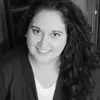Liquid biopsy speeds up ovarian cancer detection
New research published in the journal Scientific Reports enables a new way to detect the return of ovarian cancer earlier than previously possible.
The new method is called a liquid biopsy, in which blood is drawn from a post-surgery ovarian cancer patient to compare that DNA with the DNA of the patient’s previous tumor. If the DNA in the patient’s post-surgery bloodwork is the same as the tumor, it’s an indication the cancer is back.
“With liquid biopsies, we don’t have to wait for tumor growth to get a DNA sample," said lead author, George Vasmatzis, PhD. This important discovery makes it possible for us detect recurrence of the disease earlier than other diagnostic methods. We can repeat liquid biopsies to monitor the progression of the cancer. That gives hope of a better treatment plan over time.”
Vasmatzis explained that the DNA comparison, which was tested on 10 patients at the Mayo Clinic, is done using next-generation mate-pair sequencing, which is useful as a relatively inexpensive test.
The benefit to this procedure is that physicians can see when ovarian cancer might be returning at an early stage of relapse. Previously, the only way to detect (often less treatable) ovarian cancer relapse, which is often less treatable, was to wait until a biopsy could be performed on a re-grown tumor. By then, the returning cancer could be more advanced and therefore difficult to treat.
This could help the more than 21,000 women who are diagnosed with ovarian cancer in the U.S. annually, more than half of whom will end up dying from the disease.
